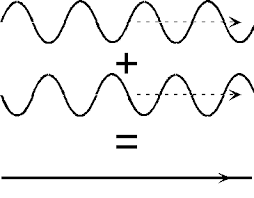Interference is a phenomenon that occurs when two waves meet and combine with each other. Depending on their phase relationship, the resulting wave can be either amplified or canceled out. Destructive interference is the phenomenon where the amplitude of the resulting wave is reduced when two waves meet and their troughs and peaks align in such a way that they cancel each other out.
Understanding the Concept of Destructive Interference
To understand destructive interference, it is necessary to have a basic understanding of wave properties. A wave can be described as a disturbance that propagates through space, carrying energy from one point to another. Waves have several properties, including amplitude, wavelength, and frequency.
When two waves of the same frequency and amplitude meet, they interfere with each other. Depending on the phase relationship between the two waves, they can either reinforce each other (constructive interference) or cancel each other out (destructive interference). This interference is a result of the superposition principle, which states that when two waves meet, the resulting wave is the sum of their individual waves.
Properties of Destructive Interference
In destructive interference, the resulting wave has a lower amplitude than either of the individual waves.
The amplitude of the resulting wave is the difference between the amplitudes of the two individual waves.
The phase difference between the two waves is an important factor in determining whether the interference will be constructive or destructive.
When the phase difference between the two waves is a multiple of (180 degrees), the resulting wave will be canceled out. This occurs because the peaks of one wave align with the troughs of the other wave, resulting in a net amplitude of zero.

Equation for the first wave can be given as
and,
Equation for the second wave can be given as
and if we will add, we will get,
Thus, the resulting amplitude will be zero due to destructive interference of these two waves.
Applications of Destructive Interference
Destructive interference has several practical applications, ranging from noise-cancellation technology to the study of light waves.
- Noise-Cancellation Technology
One of the most common applications of destructive interference is in noise-cancellation technology. This technology is used in headphones, speakers, and other audio equipment to cancel out unwanted noise. Noise-canceling headphones work by using a microphone to pick up external noise and generate an inverted wave that cancels out the unwanted noise. The inverted wave is created by adding an extra speaker to the headphones that produces a wave that is 180 degrees out of phase with the unwanted noise. The resulting wave cancels out the unwanted noise, leaving only the desired audio.
- Optical Interference
Destructive interference is also used in the study of light waves. When light waves interact with each other, they can undergo interference. This interference is used in a variety of applications, including thin-film interference, which is used in anti-reflective coatings for glasses and camera lenses. Thin-film interference occurs when light waves reflect off of two surfaces with a small gap between them. The waves that reflect off of the two surfaces interfere with each other, resulting in either constructive or destructive interference. In the case of anti-reflective coatings, the thickness of the film is designed to produce destructive interference, which cancels out reflected light and reduces glare.
- Sonar Technology
Destructive interference is also used in sonar technology. Sonar uses sound waves to locate objects underwater. When the sound waves encounter an object, they bounce back and are detected by a receiver. By analyzing the time it takes for the waves to bounce back and the amplitude of the reflected waves, it is possible to determine the location and size of the object. However, when multiple sound waves are emitted, they can interfere with each other, producing a complex pattern of waves. By analyzing these waves, it is possible to determine the properties of the object being detected.
Recommended Articles:
Derivation of the Terminal Velocity
Derivation of Torsion Equation
Van Der Waals Equation
Derivation of Work Energy Theorem
Destruction caused cyclones
Interference is a phenomenon that occurs when two waves meet and combine with each other. lower When the phase difference between the two waves is a multiple of (180 degrees), the resulting wave will be canceled out. Noise Cancellation Technology, Optical Interference and Sonar Technology are the few applications of destructive interference. Destructive Interference FAQs
What do you mean by interference?
In destructive interference, the resulting wave has a ______ amplitude than either of the individual waves.
What is the condition for the cancellation of the resulting wave?
Enlist some applications of destructive interference.
